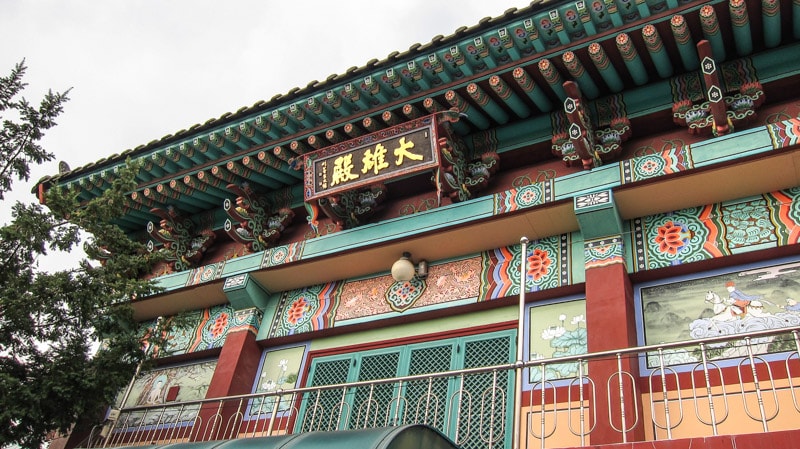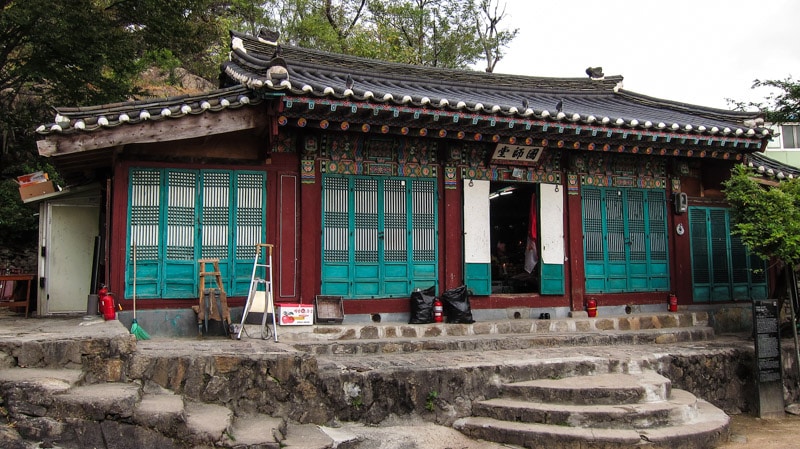
Guksadang Shrine, on Mt. Inwangsan, is one of the most important and almost mythical Shamanic shrines in Korea that at a time was used for exorcisms. Shamanism is a religion with beliefs in unseen worlds of gods, demons, and spirits. Shamans believe in 12 deities which are the spirit of the mountain, the spirit of the dragon king, the spirit of three monks, and spirit of seven stars.
The history of the shrine dates back to 1395 when it was used to make sacrifices to Mongmyeok the Great.
Originally, the building was located at the location of Palgakjeong Pavilion on Mt. Namsan. In 1925, the Japanese moved the building to its current location at Mt. Inwangsan to make way for their own Shinto shrine.
Inside the colorful but simple building are portraits of shamanistic gods including Master Monk Muhak and also of King Taejo, the first king of the Joseon Dynasty. He reigned from 1392 to 1398.
Also found inside are food offerings for the gods left by those who travel from all over the country to show their respect and who participate in shamanist ceremonies known as gut.
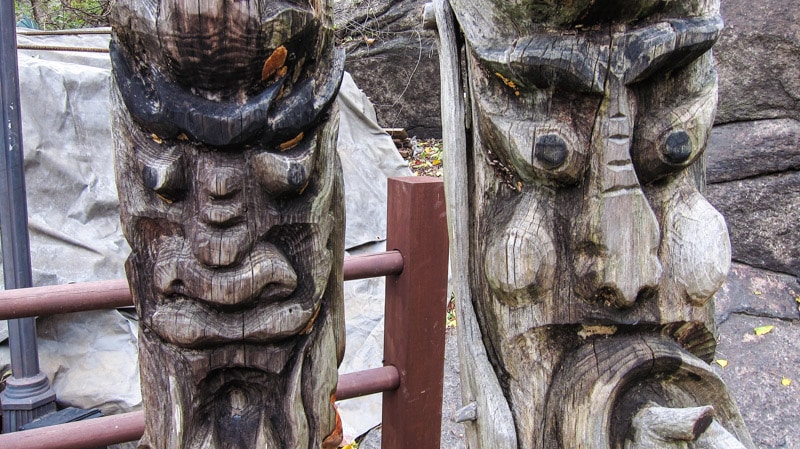
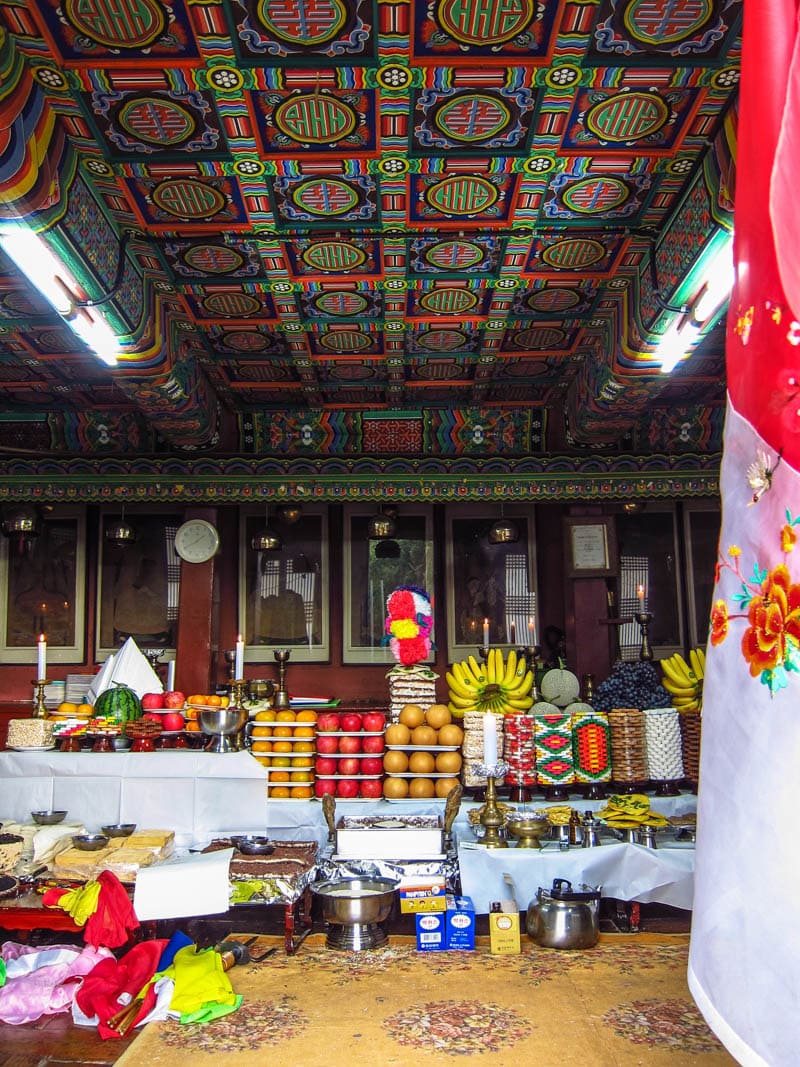
Guksadang Shrine Information
Admission
Free
How to Get Here
Take Subway Line 3 to Dongnimmun Station (Exit 2).
Map
Additional Resources
Klook
Klook offers discounted tickets and reservations for various attractions and services in Seoul, from theme parks and museums to tours and transportation options.
Viator by TripAdvisor
Viator is a popular online platform that helps travelers book tours, activities, and unique experiences worldwide, including in Seoul. It connects users with a wide selection of options – from sightseeing tours to cultural events and outdoor adventures – all offered by local providers.
Rakuten
Save money while exploring Seoul with Rakuten's cashback program. Book your hotels or other services through Rakuten and enjoy cashback rewards and exclusive deals.
If you sign up using the link below, you could earn $30 cashback on your first purchase over $30.
Book Recommendations
For an immersive guide to Seoul, many travelers choose to bring a book along. Fodor's Seoul, for example, offers detailed recommendations on sights, restaurants, maps, and travel tips.
Nearby Sights
Seodaemun Prison History Hall
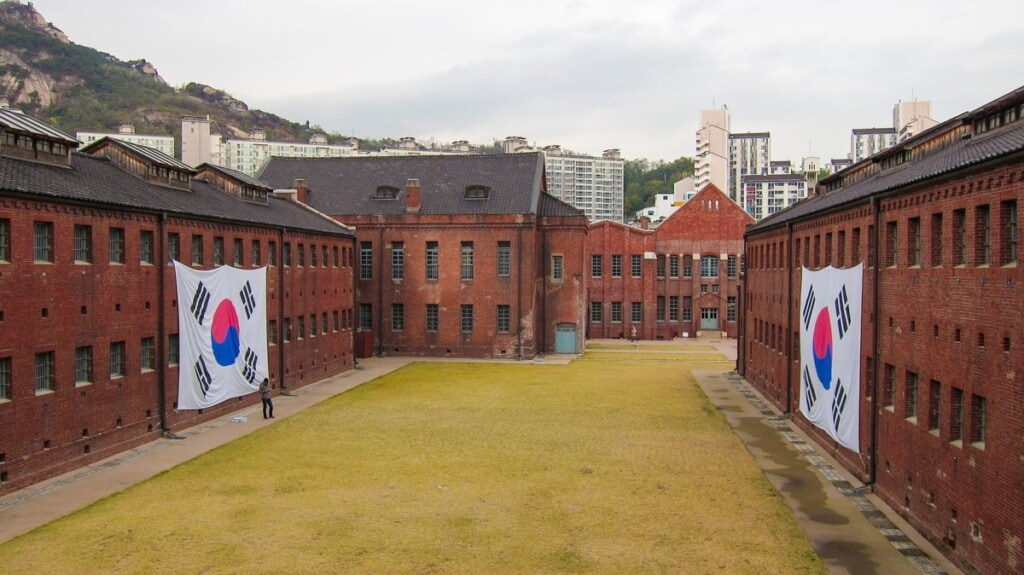
The Seodaemun Prison History Hall is a museum and memorial that honors those who suffered and gave up their lives for Korea during the Japanese occupation. The institution was used by the Japanese to house independence and pro-democracy activists. It also represents the suffering of the Korean people as they struggled to archive independence and democracy.
Dongnimmun Gate (Independence Gate)
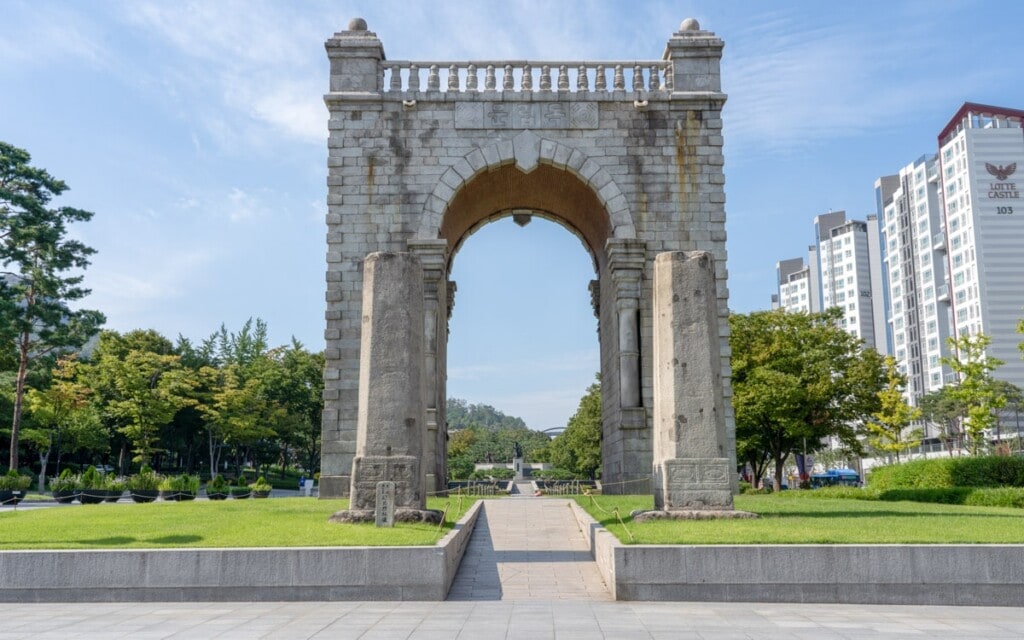
Dongnimmun Gate (Independence Gate) is a memorial built to honor the Korean people and their fight for national independence over foreign intervention. The gate is located in the southeastern corner of Seodaemun Independence Park near Seodaemun Prison History Hall. A gate known as Yeongeunmun once stood at this location. It was here where Chinese and other foreign envoys were received and greeted.
Sajik Park
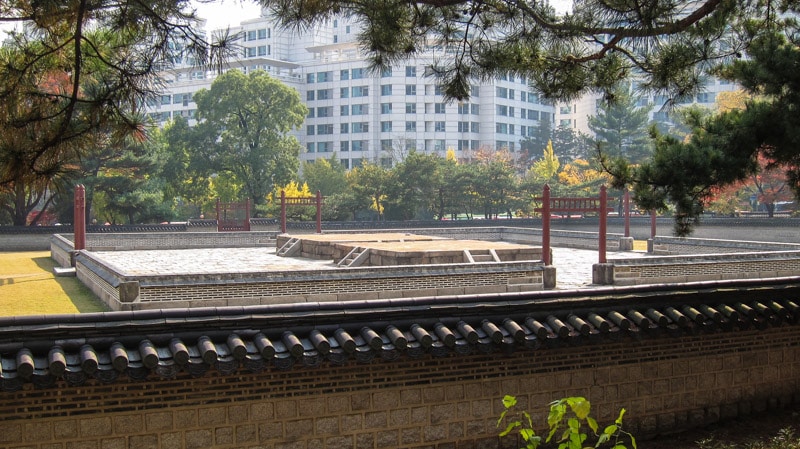
Sajik Park is a park located near the Central Government Complex on the hills of Mt. Inwang. Rites to the deities of earth and grains are performed here. It was here where sacrifices and ceremonies were performed in honor of the deities of the earth and the deities of the grains.
Tongin Market
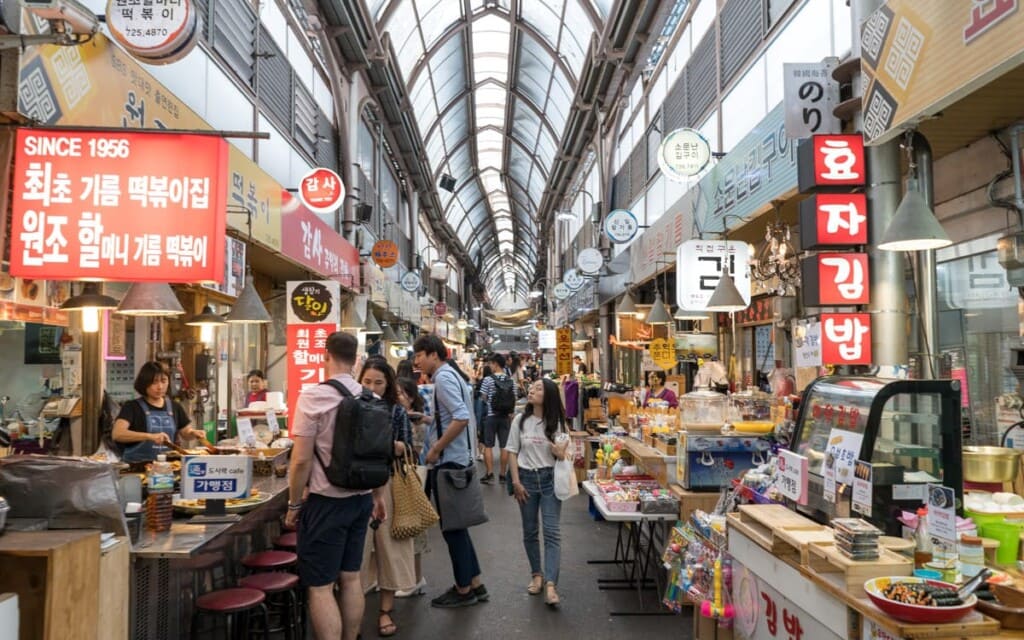
Tongin Market is a traditional market located west of Gyeongbokgung Palace and Seochon Village. The compact market features about 80 different shops along a 200 meter covered alleyway. In addition to restaurants and banchan shops, the market also features Korean street food stalls along with vendors selling a range of fresh produce such as vegetables, fruits, fish, and meat.
Yeongcheon Market
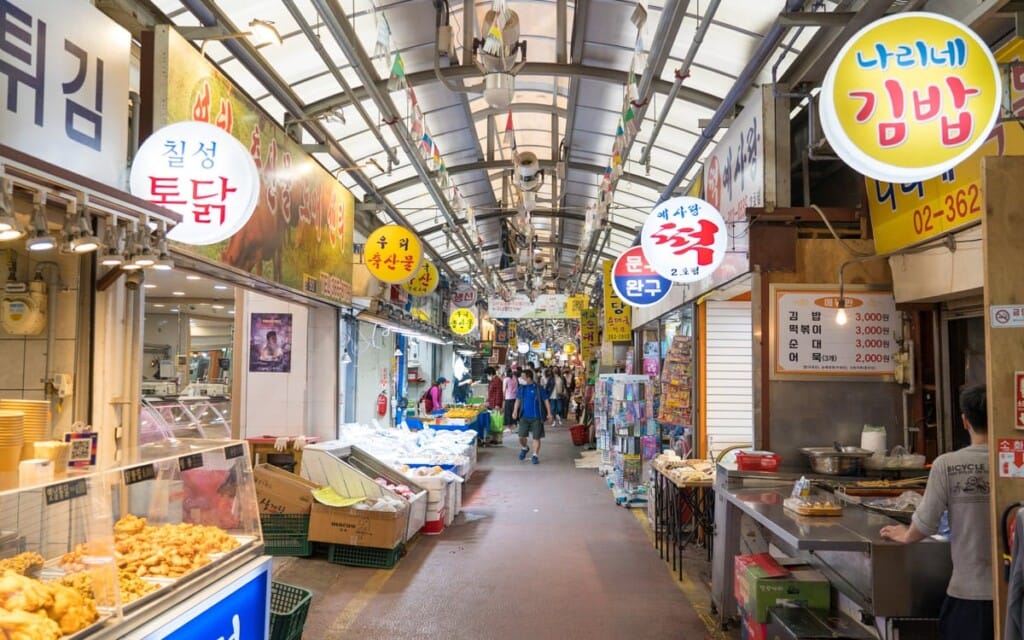
Yeongcheon Market is a small traditional market located between Seodaemun Station and Dongnimmun Station in Seodaemun-gu. Established in the 1960s, this single alley covered market with about 130 stores is popular for its street foods, fresh produce, fruits, meats, seafood, toys, shoes, and more. Although it is not large in size, Yeongcheon Market features a wide variety of items sold at affordable prices. As you walk down the 250 meter (820 foot) alley, you might notice how many of the stores sell similar items whether it's vegetables, meat, garlic, seafood, dried peppers, or spices.
Last Updated on Mar 14, 2025
